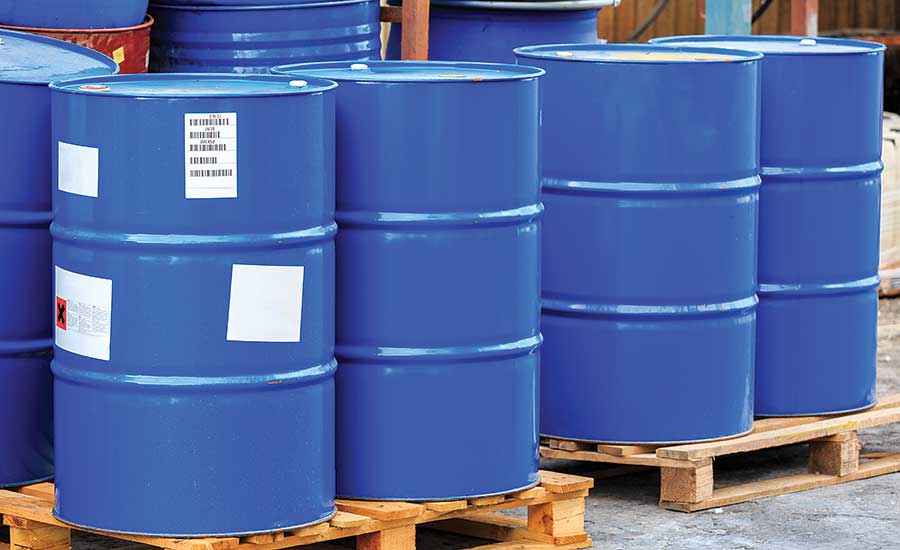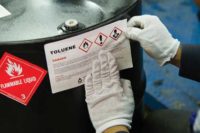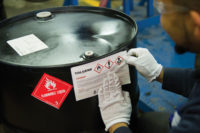The Globally Harmonized System for Classification and Labeling of Chemicals (GHS) is an international approach to managing chemical hazards that “harmonizes” the criteria for classifying them. The GHS provides harmonized classification criteria for health, physical, and environmental hazards of chemicals, as well as standardized label elements that are assigned to these hazard classes and categories. A standardized order of information for safety data sheets (SDSs) is also provided.
And while the system itself may be global, the way each country adopts the GHS into its existing legislative framework and regulatory requirements can differ.
When it comes to Canada and the U.S., the existing requirements of workplace safety laws of Health Canada and OSHA have caused inconsistencies and variances in the classifications of hazards and in the requirements for container labeling and SDSs.
As Canada and the U.S. are each other’s largest trading partners, the challenge is how each country can implement GHS in a way that would allow the use of a common label and SDS without reducing or compromising worker health and safety.
National differences
In 2013, Health Canada and the U.S. Department of Labor signed a Memorandum of Understanding (MOU) to collaborate on efforts to reduce differences and inconsistencies in their respective jurisdictions, and to find common approaches and minimize potential future variances.
This collaborative effort focuses on the revised Hazard Communication Standard (HCS 2012) and Canada's Hazardous Products Regulation (HPR) national hazard communication standard, Workplace Hazardous Materials Information System (WHMIS 2015), and shipping chemicals between the two countries.
Canada and the U.S. worked together to ensure that requirements in both countries were met, to the greatest extent possible, with one label and one SDS, without reducing or compromising worker health and safety.
For example, where an SDS element is required by WHMIS, and not by the HCS, it is permitted to be on the sheet by OSHA, unless the information would contradict or cast doubt on the HCS required information. Similarly, an SDS element that is required under OSHA’s HCS but not WHMIS is permitted in Canada.
Another example applies to carcinogenicity. The HCS requires that if a chemical is identified as a carcinogen by OSHA, the International Agency for Research on Cancer (IARC), or the National Toxicology Program (NTP), then this information must be disclosed in SDS section 11, Toxicological information. Health Canada permits this information on the SDS even though under WHMIS the IARC and NTP listed carcinogens are not required to be disclosed on the SDS.
However, if an SDS from Health Canada is sent to the U.S., the SDS must disclose information on any OSHA, IARC and NTP listed carcinogens.
Let’s look at some other differences.
Updating SDSs and labels
OSHA requires that chemical manufacturers, importers, distributors, and employers update SDSs with new information within three months, and labels within six months. An updated SDS must be provided to downstream users with the next shipment of that chemical, or upon request.
In Canada, suppliers and importers are allowed 90 days to update SDSs with new data. If a hazardous product is sold or imported within 90 days after significant new data became available, the new data is not required to be included on the SDS so long as a written notice providing the new data and the date upon which it became available is transmitted to the purchaser of the product, or obtained or prepared where the product is imported.
The same applies also to Canadian suppliers and importers and container labels, except that the labels must be updated within 180 days. If a hazardous product is sold or imported within 180 days after significant new data became available, the new data is not required to be included on the label if a written notice is provided to the purchaser of the product as with the SDS.
Labeling kits
Where a package contains two or more different hazardous materials in smaller containers, OSHA requires that only the inner container(s) be labeled. There is no requirement to label the outer container.
However, the HPR requires that the outer container must be labeled. There is an exemption allowing reduced information on the outer container label, if a special statement referring the user to the individual product labels for signal words, hazard statements and precautionary statements is provided on the outer container label.
Labeling multi-container shipments
There are also differences on how multi-container shipments must be labeled. OSHA requires that only the innermost container of hazardous material be labeled with the HazCom label. The outer container does not have to be labeled.
Under the HPR, where a hazardous product is packaged in more than one container, each container must be fully labeled, with two exceptions:
- The container is ≤ 100 mL; or
- One of the specific outer container exemptions applies.
Biohazardous Infectious Materials (BIM)
Under the HPR, a hazard class exists for BIM and products that meet the criteria for this hazards class must be appropriately labelled, and information included on the SDS.
OSHA does not regulate biohazardous infectious materials under HCS, so no labeling or SDS requirements exist.
Hazards Not Otherwise Classified
Both HazCom and the HPR address physical and health hazards for which the GHS does not currently have hazard class and category. In the U.S., these are referred to as Hazards Not Otherwise Classified (HNOC), and there are no label requirements for these hazards.
For a mixture that contains an HNOC ingredient at a concentration of 1% or more, there is no requirement to disclose the chemical name or concentration of the HNOC ingredient on the SDS.
In Canada, these substances are broken down into Physical Hazards Not Otherwise Classified (PHNOC) and Health Hazards Not Otherwise Classified (HHNOC). Label elements are required for PHNOC and HHNOC per paragraphs 3(1)(d) of the HPR.
For mixtures that contain an HHNOC ingredient at a concentration of 1 percent or more, information relating to the HHNOC ingredient, including its chemical name and concentration or concentration range, must be disclosed on the SDS.
What’s next?
Health Canada and OSHA will continue to develop materials to support interpretations on regulatory and technical issues for both agencies, and work to prevent or reduce differences, to the extent possible, in the legislative and regulatory requirements of each country in the future.


